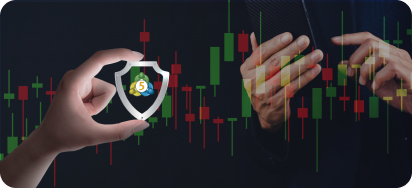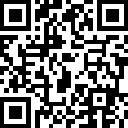Key Economic Indicators Every Trader Should Follow
Economic indicators are vital tools for traders navigating today’s fast-moving financial markets. Whether you’re trading forex, stocks, commodities, or indices, understanding how economic data influences price movements can be the difference between a well-timed trade and a costly mistake.
What Are Economic Indicators?
At their core, economic indicators are statistics that reflect the health and direction of an economy. Governments, central banks, and independent agencies release these figures regularly, covering everything from employment and inflation to manufacturing activity and retail spending. These releases often trigger market-moving data events—causing spikes in volatility and sharp price reversals.
For traders, especially those engaged in forex trading, staying informed about these economic releases is crucial. Currency values are directly influenced by national economic performance, and indicators such as GDP growth, unemployment rates, and interest rate decisions play a central role in shaping market sentiment.
What makes these indicators even more powerful is how they are interpreted. Markets don’t just react to the numbers—they respond to the gap between expectations and actual results. A lower-than-expected inflation reading might send a currency tumbling, while a surprise rise in job numbers could strengthen it.
Types of Economic Indicators: Leading, Lagging, and Coincident
Traders typically classify economic indicators into three main types, based on how they relate to the economic cycle:
- Leading Indicators: These are predictive in nature. They change before the economy starts to follow a particular trend, making them extremely valuable for forecasting. Examples include new orders, building permits, and the Purchasing Managers’ Index (PMI).
- Lagging Indicators: These reflect changes that have already taken place. They confirm long-term trends rather than signal new ones. Common lagging indicators include unemployment rates and consumer debt levels.
- Coincident Indicators: These move in real time with the economy. They help traders assess the current state of economic activity. GDP growth and industrial production are typical examples.
Understanding these classifications helps traders interpret the market-moving data more effectively. For instance, a sharp drop in a leading indicator could be an early sign of economic slowdown, prompting cautious positioning in forex trading or equities.
Why Traders Must Follow Economic Indicators
For any serious trader, especially in forex trading, tracking key economic indicators is not optional—it’s essential. These indicators act as early warning systems for shifts in market sentiment, central bank decisions, and price volatility across all major asset classes.
1. Anticipating Market Volatility
Most economic releases are scheduled in advance and listed on economic calendars. Traders use these calendars to prepare for market-moving data, particularly high-impact indicators like Non-Farm Payrolls (NFP), CPI inflation data, or central bank rate decisions. These events often create sharp movements in currency pairs, stock indices, and commodities.
For example, a surprise interest rate hike by the Federal Reserve could immediately strengthen the US dollar, affecting all USD pairs. If you’re not aware of this release, you risk being caught on the wrong side of a volatile move.
2. Informing Trading Strategies
Traders use economic indicators to support both fundamental and technical analysis. While technical traders focus on chart patterns, fundamentals such as GDP growth, inflation, and employment provide context for market trends and breakout movements. A rising PMI may signal economic expansion and support long positions, while falling retail sales figures may prompt a more cautious approach.
Understanding these indicators also helps traders refine risk management—adjusting lot sizes, setting tighter stop losses, or avoiding trades entirely during high-impact news events.
3. Predicting Central Bank Policy
No factor moves markets more than central banks. And what guides their decisions? Economic data. Traders follow inflation figures (like the CPI), employment data, and GDP to forecast interest rate changes or asset purchase programmes. When you understand which indicators the central bank prioritises, you can anticipate their moves and position accordingly.
For instance, if inflation is persistently high, traders might expect the central bank to raise rates. This expectation often gets priced into markets before the actual decision is announced.
4. Gaining a Competitive Edge
Institutional traders, hedge funds, and professional investors all monitor leading indicators and lagging data to make informed decisions. Retail traders who ignore these tools are at a disadvantage. Incorporating economic indicators for trading can help level the playing field—giving you insight into macroeconomic trends and enabling smarter, more confident trades.
Top Economic Indicators Every Trader Should Watch
Successful traders know that understanding how markets react to data is just as important as knowing the numbers themselves. Below are the key economic indicators for traders—each one has the potential to move markets, shift sentiment, and influence trading strategies across forex, stocks, and commodities.
Gross Domestic Product (GDP)
GDP measures the total value of all goods and services produced in a country. It is the most comprehensive indicator of economic activity.
Why it matters to traders: A rising GDP signals economic growth, which is generally bullish for a country’s currency and stock market. A shrinking GDP often leads to currency depreciation and recession concerns.
- Strong GDP → boosts demand for currency (e.g., USD, EUR)
- Weak GDP → lowers investor confidence and triggers safe-haven flows
Real-world examples: Quarterly GDP releases, especially from the US, EU, and China, are major market-moving data events.
Consumer Price Index (CPI)
CPI tracks changes in the price of a basket of goods and services. It is the most widely used measure of inflation.
Why it matters to traders: Central banks closely monitor CPI to adjust interest rates. Rising inflation may prompt a rate hike, while low inflation may lead to stimulus or rate cuts.
- High CPI → strengthens currency (expectations of rate hikes)
- Low CPI → weakens currency (loose monetary policy ahead)
Unemployment Rate & Non-Farm Payrolls (NFP)
The unemployment rate measures the percentage of people actively looking for work but unable to find jobs. NFP, a US-specific report, tracks monthly employment changes in non-agricultural sectors.
Why it matters to traders: Employment is a leading indicator of economic health. Strong job creation signals growth, while rising unemployment reflects weakness.
- Strong NFP → bullish for USD and US equities
- Weak NFP → bearish for USD, possible stock pullback
NFP is one of the most volatile data releases in forex trading, so traders must avoid overexposure without a plan.
Interest Rate Decisions & Central Bank Meetings
Central banks like the Fed, ECB, and BoE set short-term interest rates, which influence borrowing costs and currency strength.
Why it matters to traders: Interest rates affect capital flows. Higher rates attract investors seeking yield, strengthening a currency. Lower rates push money into riskier assets.
- Rate hike → bullish for local currency
- Rate cut → bearish for local currency
Retail Sales
This indicator measures total receipts from retail stores. It provides insight into consumer spending, a major component of GDP.
Why it matters to traders: Stronger retail sales show consumer confidence and fuel economic growth.
- Strong retail sales → positive for GDP expectations and local currency
- Weak retail sales → raises slowdown fears
Purchasing Managers’ Index (PMI)
PMI reflects the business sentiment in the manufacturing and services sectors. It is released monthly and considered a leading indicator.
Why it matters to traders: PMIs show economic momentum before GDP and employment figures confirm it.
- PMI > 50 = expansion (bullish)
- PMI < 50 = contraction (bearish)
Trade Balance
The trade balance measures the difference between exports and imports. A surplus means a country exports more than it imports, while a deficit shows the opposite.
Why it matters to traders: A surplus increases currency demand; a deficit may pressure the currency.
- Trade surplus → supports currency value
- Trade deficit → weakens currency, may cause long-term imbalances
This metric is popular with commodity-exporting nations like Canada and Australia.
Consumer Confidence Index (CCI)
CCI measures how optimistic or pessimistic consumers are about the economy’s outlook.
Why it matters to traders: Rising confidence can drive spending and growth. Falling confidence may signal economic trouble ahead.
- High CCI → bullish for retail, housing, and local equity markets
- Low CCI → negative for consumer-dependent sectors
Economic Calendars: A Trader’s Best Friend
The economic calendars help traders stay ahead of market-moving data by listing the exact time and date of scheduled economic releases from around the world.
What Is an Economic Calendar?
An economic calendar is a tool that displays upcoming economic indicators, central bank meetings, speeches, and other financial events. Most calendars also show:
- The previous data release
- The forecast or market expectation
- The actual number once released
- An impact rating (low, medium, high)
Why Every Trader Needs an Economic Calendar
Whether you’re trading intraday or positioning for the long term, an economic calendar keeps you aware of when volatility might spike. For example, knowing that Non-Farm Payrolls or a central bank rate decision is due can help you avoid unexpected slippage, widen spreads, or sudden stop-outs.
Traders often avoid entering trades just before high-impact releases—or they might prepare to trade the volatility if they have a data-based strategy. Either way, planning is key.
Regional Nuances: US vs EU vs Asia Data
Not all economic indicators carry equal weight globally. Traders need to understand regional differences in how markets respond to data. The US, Eurozone, and Asia each release their own set of statistics, but their influence on price action varies depending on global market structure, liquidity, and investor focus.
United States: The Global Benchmark
The US economic calendar is the most influential in global markets. This is largely due to the US dollar’s role as the global reserve currency, the size of the US economy, and the dominance of US-based institutions in trading volumes.
Key US indicators to watch:
- Non-Farm Payrolls (NFP)
- Consumer Price Index (CPI)
- Federal Reserve rate decisions
- GDP growth reports
- Retail Sales
US data regularly moves not only the USD but also gold, oil, equities, and risk sentiment globally. Many traders around the world build strategies around forex trading indicators from the US.
Eurozone: Fragmented but Powerful
The Eurozone releases region-wide and country-specific data. Germany and France—the two largest economies—often provide early signals of the region’s overall performance.
Key Eurozone indicators:
- ECB interest rate decisions
- Euro Area CPI and Core Inflation
- German Ifo Business Climate Index
- Euro Area and German PMI
- Unemployment Rate (Eurostat)
Data from the Eurozone affects the EUR/USD, DAX30, and broader risk sentiment. The European Central Bank’s (ECB) reaction to inflation and energy costs has grown more significant since 2022.
Asia-Pacific: Rising Influence
Asia-Pacific data, especially from China and Japan, increasingly drives markets—particularly during the Asian trading session.
Key indicators by country:
1.China
- Trade Balance
- Industrial Production
- Caixin and NBS PMIs
- GDP Growth
2.Japan
- Bank of Japan (BoJ) rate decisions
- Core CPI
- Tankan Business Survey
- Wage Growth
3.Australia & New Zealand
- RBA and RBNZ policy meetings
- Employment Change
- Retail Sales
- Commodity-linked trade figures (iron ore, dairy)
Asian data heavily affects currency pairs like AUD/USD, NZD/USD, USD/JPY, and CNH crosses. China’s numbers also influence global commodity markets and emerging economies.
Conclusion
For traders across all markets, from forex to stocks to commodities, keeping track of key economic indicators is essential. These data points don’t just provide information—they offer opportunity. When interpreted correctly, economic indicators can serve as early signals for market shifts, central bank decisions, and emerging trends.
Whether you focus on leading indicators like PMI and consumer confidence or react to lagging indicators like unemployment and GDP, the goal is the same: gain insight, reduce uncertainty, and improve timing.
But indicators are only one part of the equation. Their real value comes when combined with sound risk management, a trading plan, and awareness of market expectations.
Trade with Ultima Markets
Ultima Markets is a fully licensed broker and a multi-asset trading platform offering access to
250+ CFD financial instruments, including Forex, Commodities, Indices and Shares. We
guarantee tight spreads and fast execution. Until now, we have served clients from 172
countries and regions with our trustworthy services and well-built trading systems.
Ultima Markets has achieved remarkable recognition in 2024, winning prestigious awards
such as the Best Affiliates Brokerage, Best Fund Safety in Global Forex Awards, and
the Best APAC CFD broker in Traders Fair 2024 Hong Kong. As the first CFD broker to join
the United Nations Global Compact, Ultima Markets underscores its commitment to
sustainability and the mission to advance ethical financial services and contribute to a
sustainable future.
Ultima Markets is a member of The Financial Commission, an international independent
body responsible for resolving disputes in the Forex and CFD markets.
All clients of Ultima Markets are protected under insurance coverage provided by Willis
Towers Watson (WTW), a global insurance brokerage established in 1828, with claims
eligibility up to US$1,000,000 per account.
Open an account with Ultima Markets to start your index CFDs trading journey.







![[MetaTrader 5 Mobile Trading Complete Guide] 7 Key Advantages for Real-Time Market Access](https://www.ultimamarkets.com/wp-content/uploads/2025/04/mt5_mobile_trading_card.jpg)
















